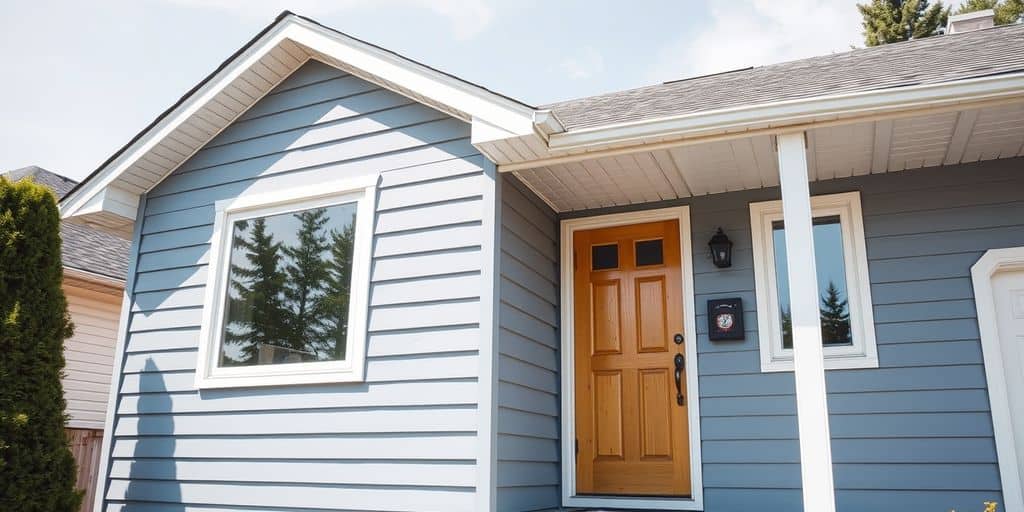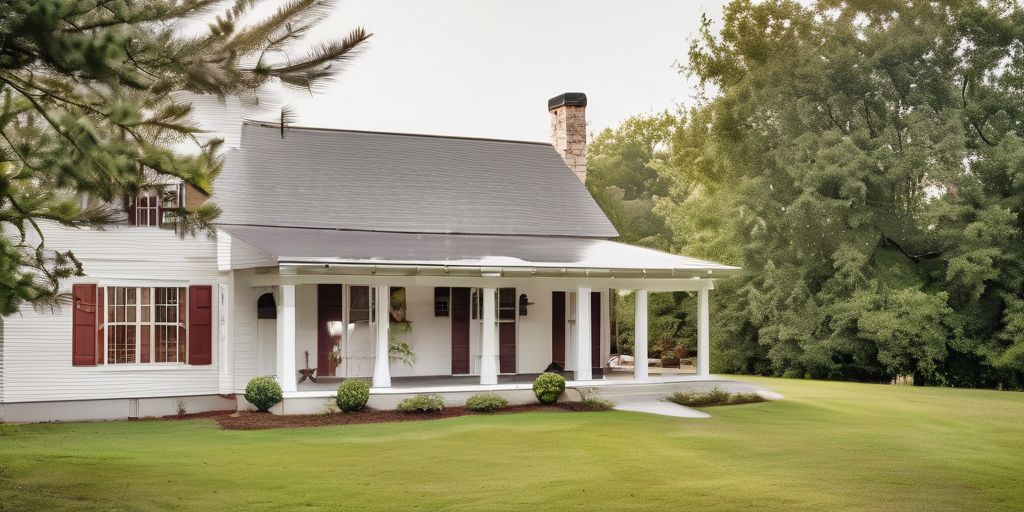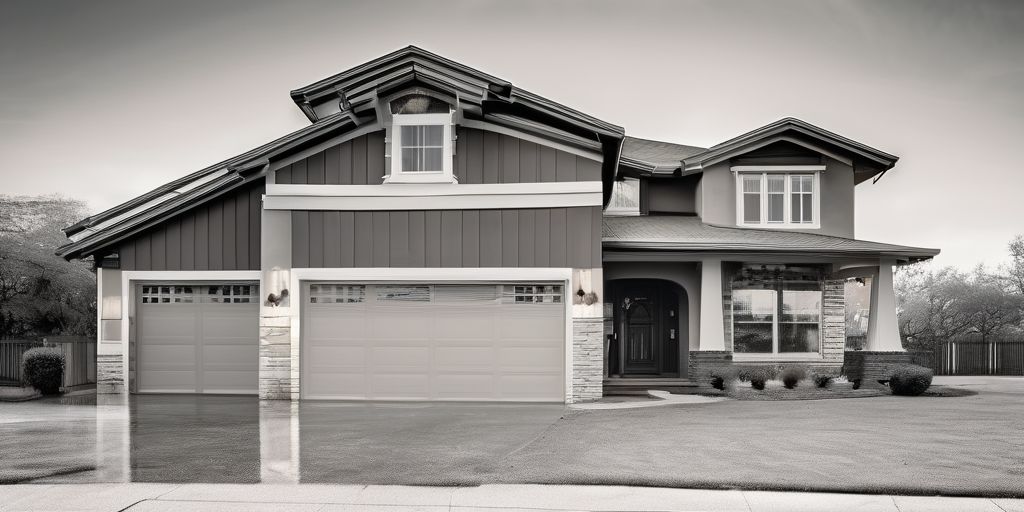Spray painting window frames can make your home look fresh and new. If you live in Niagara Falls, this guide will help you master the techniques needed for a professional finish. From preparing the frames to selecting the right paint, you’ll learn all the steps to achieve beautiful and long-lasting results.
Key Takeaways
- Proper preparation, including cleaning and sanding, is essential for a smooth finish.
- Choosing the right primer helps the paint adhere better and last longer.
- Masking off surrounding areas prevents overspray and keeps your workspace clean.
- Applying multiple thin coats of paint ensures even coverage and reduces drips.
- Regular maintenance and touch-ups will keep your painted window frames looking great.
Preparing Your Window Frames for Spray Painting
Cleaning and Sanding Techniques
Before you start spray painting, it’s crucial to clean and sand your window frames. Proper preparation ensures the paint adheres well and lasts longer. Follow these steps:
- Clean the Frames: Use a damp cloth to wipe away dirt, dust, and cobwebs. For stubborn grime, a mild detergent can be helpful.
- Sand the Surface: Use fine-grit sandpaper to smooth out any rough spots or peeling paint. This step is essential for achieving a smooth finish.
Taking the time to clean and sand your frames will enhance the durability and beauty of your spray-painted surfaces.
Choosing the Right Primer
Selecting the right primer is essential for a successful spray painting project. A good primer helps the paint adhere better and provides a solid base. Here are some tips:
- Type of Primer: Choose a primer that is suitable for the material of your window frames, whether it’s wood, metal, or vinyl.
- Application: Apply a thin, even coat of primer and let it dry completely before moving on to painting.
Masking Off Surrounding Areas
To avoid getting paint on areas you don’t want to be painted, it’s important to mask off the surrounding areas. Here’s how:
- Use Painter’s Tape: Apply painter’s tape around the edges of the window frames to protect the glass and walls.
- Cover Larger Areas: Use plastic sheeting or drop cloths to cover the floor and any nearby furniture.
Proper masking can make the difference between a professional-grade finish and a messy outcome.
Mastering the Spray Painting Technique
Achieving Even Coverage
To achieve even coverage when spray painting window frames, follow these steps:
- Start with light dusting coats to avoid drips and runs. Begin in a spot slightly to the side of the surface and move the can smoothly across to the other side.
- Maintain a consistent distance from the frame, typically about 10-12 inches, to ensure even coverage.
- Overlap each stroke by about one-third to avoid missed spots and achieve a uniform layer.
- Allow each coat to dry completely before applying the next. This may take anywhere from 20 minutes to an hour, depending on the paint and weather conditions.
Remember, patience is key. Rushing the process can lead to imperfections that are difficult to fix later on.
Avoiding Drips and Runs
Drips and runs can be a common frustration when spray painting, but with a few expert tips, you can prevent and fix these issues to achieve a flawless finish. Always keep the spray can moving to avoid buildup of paint that can lead to drips. If you do encounter a run, don’t panic; there’s a simple fix.
- Stop painting immediately when you notice a drip or run.
- Wait for the paint to dry slightly, then gently sand the area.
- Once smooth, clean the area and reapply a light coat of paint.
In the event of a more stubborn run, you may need to wait for the paint to fully cure before sanding it down. This will prevent further damage to the surrounding paintwork.
Layering Coats for Durability
Layering coats is essential for a durable finish. Here’s how to do it effectively:
- Apply a thin, even coat and let it dry completely.
- Lightly sand the surface with fine-grit sandpaper to ensure the next coat adheres well.
- Apply the next coat in the same manner, ensuring even coverage.
- Repeat the process until you achieve the desired thickness and durability.
It’s better to apply multiple light coats than one heavy coat. This technique not only prevents drips but also ensures an even coverage and a durable finish.
If you’re spray painting near the iconic Montebello Park in St. Catharines, be mindful of the potential for wind to cause uneven spray patterns. Always check the weather forecast and choose a calm day for your project to avoid these challenges.
Selecting the Best Paint for Window Frames
Understanding Paint Types and Finishes
Choosing the right type of spray paint for your window frames is crucial for both the appearance and longevity of your project. Consider existing colors, durability, and the local environment when selecting the perfect paint for your frames. Here’s a quick guide to help you understand the different options available:
- Enamel Paints: Known for their durability and glossy finish, perfect for surfaces that endure a lot of wear and tear.
- Acrylic Paints: Quick-drying and available in a wide range of colors, acrylics are great for a vibrant look.
- Latex Paints: Easy to clean up and environmentally friendly, but may not be as durable as other options.
When it comes to finishes, you have a variety of choices:
- Matte: Non-reflective and hides imperfections well.
- Satin: A bit of sheen, offering a balance between matte and glossy.
- Glossy: Highly reflective and easy to clean, ideal for a modern look.
Achieve a quick transformation through methodical spray painting for longevity and protection.
Choosing Weather-Resistant Paints
In Niagara Falls, the weather can be quite unpredictable, making it essential to choose weather-resistant paints. These paints are formulated to withstand harsh conditions, ensuring your window frames remain in top condition. Look for paints that offer:
- UV protection to prevent fading
- Water resistance to avoid peeling and blistering
- Flexibility to expand and contract with temperature changes
Top Brands for Spray Paint
While there are many brands available, it’s important to select one that meets your specific needs. Focus on brands that offer:
- High durability
- A wide range of colors and finishes
- Good reviews from other users
Remember, the best paint primer depends on the surface, where it’s located, and your preferred dry time. We tested top-rated picks for a variety of projects.
Weather Considerations for Spray Painting in Niagara Falls
When planning to spray paint window frames in Niagara Falls, it’s crucial to consider the local weather. The climate can significantly impact the quality and durability of your paint job. Here are some key points to keep in mind:
Ideal Weather Conditions
- Mild Temperatures: Aim for a day with temperatures between 50°F and 77°F. This range ensures the paint adheres well and dries evenly.
- Low Humidity: High humidity can cause the paint to dry too slowly, leading to drips and an uneven finish. Check the forecast and choose a day with low humidity levels.
- Calm Winds: Wind can blow dust and debris onto your wet paint, ruining the finish. Pick a day with little to no wind.
- Overcast Skies: Direct sunlight can cause the paint to dry too quickly, leading to cracks and an uneven surface. Overcast days are ideal for spray painting.
Planning Around Local Climate
Niagara Falls is known for its variable weather, so planning is essential. Here are some tips:
- Check the Forecast: Always check the weather forecast a few days in advance. Look for a window of stable weather conditions.
- Seasonal Considerations: Spring and fall are generally the best times for spray painting in Niagara Falls. Summer can be too hot, and winter is too cold and damp.
- Time of Day: Early mornings or late afternoons are often the best times to paint, as temperatures are more moderate.
Protecting Your Work from the Elements
Even with perfect planning, unexpected weather changes can occur. Here’s how to protect your work:
- Use Tarps and Covers: Keep tarps and covers handy to protect your work if it starts to rain unexpectedly.
- Quick-Drying Paints: Consider using quick-drying paints to minimize the risk of weather-related issues.
- Temporary Shelters: If possible, set up a temporary shelter or canopy to shield your work area from sudden weather changes.
Pro Tip: If you’re near a landmark like the Niagara Falls State Park, be extra cautious of the mist and moisture in the air, which can affect your paint job.
By considering these weather factors, you can achieve a high-quality, durable finish on your window frames, even in the variable climate of Niagara Falls.
Post-Painting Care and Maintenance
Cleaning and Inspecting Painted Frames
Maintaining the pristine appearance of your newly spray-painted window frames is crucial for extending their lifespan and keeping them looking as good as new. Regular cleaning is the first step in this maintenance routine. Use a soft cloth or sponge with mild soapy water to gently wipe away any dirt or grime that has accumulated. It’s important to avoid abrasive cleaners or harsh chemicals that can damage the paint finish.
For touch-ups, always have a small amount of the original spray paint on hand. Address any chips or scratches promptly to prevent rust or further damage. Here’s a simple guide to touch-ups:
- Clean the affected area thoroughly.
- Lightly sand the spot if necessary.
- Apply a thin layer of primer if the metal is exposed.
- Spray a light coat of paint over the primer or directly onto the sanded area.
Keeping a regular maintenance schedule will ensure your window frames remain in top condition, enhancing the curb appeal of your home.
Touch-Up Tips for Longevity
Touching up your window frames is essential for maintaining their appearance and durability. Consistency is key to seamless touch-ups. Follow these steps for effective touch-ups:
- Clean the area to remove any dirt or debris.
- Lightly sand the area to ensure the new paint adheres well.
- Apply a primer if the base material is exposed.
- Use the same spray paint to cover the area, applying thin, even coats.
If you’re near landmarks like the historic Welland Canals Centre, the harsh weather can cause more frequent wear, so keep an eye out for any signs of damage.
Seasonal Maintenance Advice
Niagara Falls experiences a range of weather conditions, making seasonal maintenance vital. Here are some tips to protect your window frames throughout the year:
- Spring: Inspect for any damage caused by winter weather. Clean the frames and touch up any areas as needed.
- Summer: Check for any signs of sun damage or fading. Reapply a UV-protective clear coat if necessary.
- Fall: Remove any debris and clean the frames to prepare for winter. Touch up any areas to prevent rust or damage from snow and ice.
- Winter: Regularly check for ice buildup and remove it carefully to avoid damaging the paint.
By following these seasonal tips, you can ensure your window frames remain in excellent condition year-round.
Common Mistakes and How to Avoid Them
Spray painting window frames can be a rewarding project, but it’s easy to make mistakes that can affect the final result. Here are some common pitfalls and how to avoid them.
Overcoming Adhesion Issues
One of the most frequent problems is poor adhesion of the paint to the window frame. This can happen if the surface is not properly prepared. To ensure good adhesion:
- Clean the surface thoroughly to remove dirt, dust, and grease.
- Sand the frame lightly to create a rough surface for the paint to grip.
- Use a high-quality primer designed for the material of your window frame.
Fixing Imperfections
Imperfections like drips, runs, and uneven coverage can ruin the look of your painted window frames. Here’s how to fix them:
- If you notice a drip or run, stop painting immediately.
- Wait for the paint to dry slightly, then gently sand the area smooth.
- Clean the area and reapply a light coat of paint.
Patience is key when correcting these imperfections. It’s better to apply multiple light coats than one heavy coat.
Preventing Uneven Coverage
Achieving even coverage is crucial for a professional-looking finish. To avoid uneven coverage:
- Hold the spray can at a consistent distance from the frame, typically about 10-12 inches.
- Move the spray can in a steady, sweeping motion to avoid heavy application in one area.
- Apply multiple thin coats rather than one thick coat.
- Overlap each pass by about one-third to ensure complete coverage.
If you’re working near a landmark like Montebello Park in St. Catharines, be mindful of the wind, which can cause uneven spray patterns. Always check the weather forecast and choose a calm day for your project.
By following these tips, you can avoid common mistakes and achieve a beautiful, durable finish on your window frames.
Tools and Equipment for a Professional Finish
Essential Spray Painting Tools
To achieve a professional finish when spray painting window frames, having the right tools is crucial. Here’s a list of essential tools you’ll need:
- Spray Gun: A high-quality spray gun ensures even paint distribution.
- Air Compressor: Powers the spray gun for consistent performance.
- Paint Containers: For holding and mixing paint.
- Drop Cloths: Protects surrounding areas from overspray.
- Masking Tape and Paper: Essential for covering areas you don’t want to paint.
- Sandpaper: Prepares the surface for better paint adhesion.
- Cleaning Solvents: Keeps your equipment in top shape.
Safety Gear and Precautions
Safety should always be a priority when spray painting. Here’s what you need to stay safe:
- Respirator Mask: Protects you from inhaling paint fumes.
- Safety Glasses: Shields your eyes from paint splatters.
- Gloves: Keeps your hands clean and protected.
- Coveralls: Protects your clothing and skin from paint.
- Ear Protection: Useful if you’re working with loud equipment like air compressors.
Remember, safety gear is not optional; it’s essential for your health and well-being.
Advanced Equipment for Best Results
For those looking to achieve a truly professional finish, investing in advanced equipment can make a significant difference:
- HVLP (High Volume Low Pressure) Sprayers: Offers precise control and reduces overspray.
- Pressure Regulators: Ensures consistent air pressure for a smooth finish.
- Extension Wands: Helps you reach high or awkward areas without straining.
- Paint Mixers: Ensures your paint is thoroughly mixed for even color and texture.
- Spray Booths: Provides a controlled environment for painting, reducing the risk of dust and debris.
In Niagara Falls, where the weather can be unpredictable, having a well-organized workstation can significantly cut down on time wasted moving between tasks. This is especially important when working near landmarks like the Niagara Falls State Park, where the mist can add an extra layer of complexity to your project.
To achieve a professional finish on your home, using the right tools and equipment is essential. From high-powered pressure washers to specialized spray painting tools, our team is equipped to handle any exterior painting project. Visit our website to learn more about our services and see how we can transform your home.
Conclusion
Mastering the art of spray painting window frames in Niagara Falls can truly transform the look of your home. With the right preparation, tools, and techniques, you can achieve a professional finish that not only enhances curb appeal but also stands up to the elements. Remember, patience and attention to detail are key. Whether you’re refreshing old frames or adding a new splash of color, spray painting offers a durable and beautiful solution. So, roll up your sleeves, follow the steps, and enjoy the rewarding process of giving your windows a fresh, new look!
Frequently Asked Questions
What supplies do I need for spray painting window frames?
You’ll need high-quality spray paint, masking tape, drop cloths, sandpaper, primer, cleaning supplies, and protective gear like gloves, safety glasses, and a mask.
How do I protect the surrounding area when spray painting?
Use drop cloths to cover the floor and nearby furniture. Apply masking tape to the edges of the window frames to protect the glass and walls from overspray. Remove or cover any hardware on the window frames.
What type of paint should I use for window frames in St. Catharines?
Choose a durable paint suitable for your window frame material. Look for exterior-grade paints with UV protection to withstand temperature changes and humidity typical in St. Catharines.
What are some safety tips for using aerosol paints?
Always spray paint in a well-ventilated area and wear protective gear. Follow the manufacturer’s instructions, avoid spraying near open flames or heat sources, and keep the paint can at the recommended distance from the surface.
How do I maintain my newly painted window frames?
Regularly clean your window frames with mild soap and water. Inspect the frames annually for any signs of chipping or fading, and apply touch-ups as needed. Consider applying a protective sealant every few years to extend the life of the paint job.
How do I fix drips and runs when spray painting?
Stop painting immediately if you notice a drip or run. Wait for the paint to dry slightly, then gently sand the area. Once smooth, clean the area and reapply a light coat of paint.






